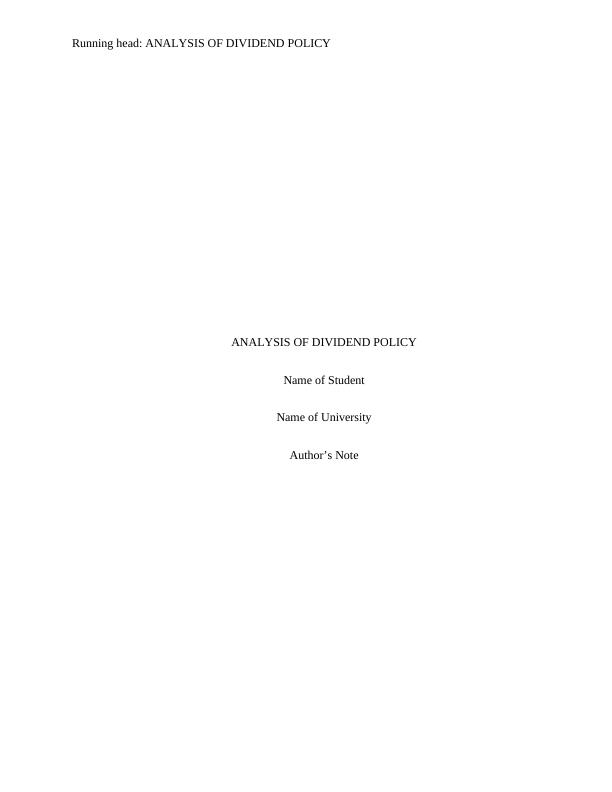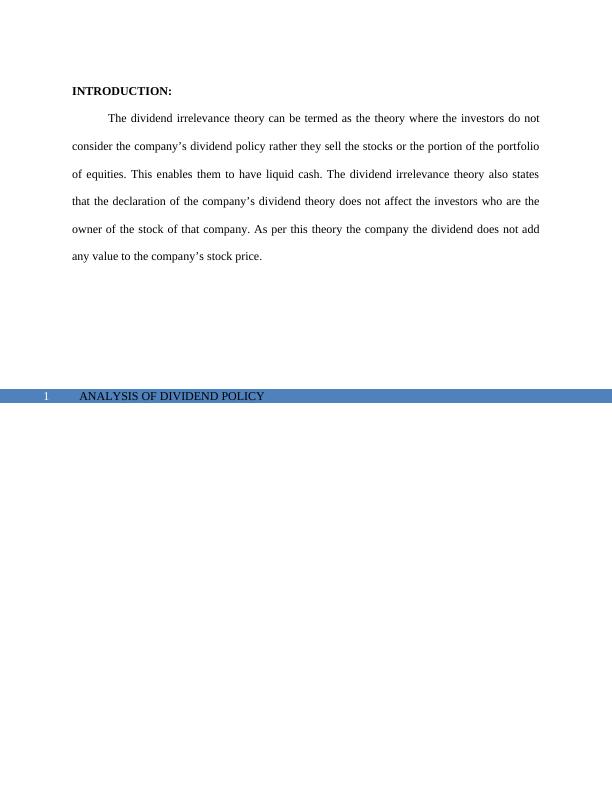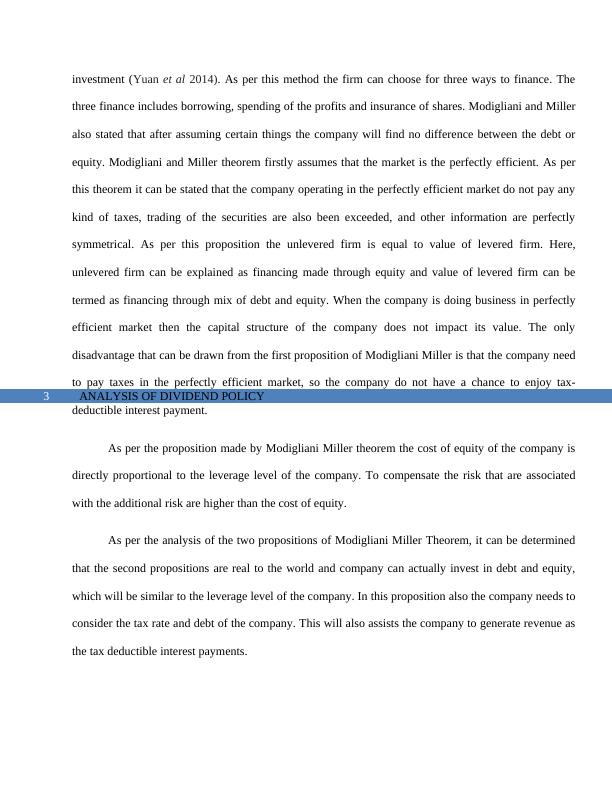Analysis of Dividend Policy Assignment 2022
This unit explores the payout decision or payout policy in corporate financial policy, specifically focusing on whether cash should be returned to shareholders, how much, and by what means. The objective is to maximize the value of the firm and shareholders' wealth.
12 Pages3178 Words26 Views
Added on 2022-09-10
Analysis of Dividend Policy Assignment 2022
This unit explores the payout decision or payout policy in corporate financial policy, specifically focusing on whether cash should be returned to shareholders, how much, and by what means. The objective is to maximize the value of the firm and shareholders' wealth.
Added on 2022-09-10
ShareRelated Documents
End of preview
Want to access all the pages? Upload your documents or become a member.
Financial Management- PDF
|11
|3684
|30
Effects of Dividends on Share Prices
|11
|2715
|146
Dividend Relevance and Irrelevance Theory for Mergers and Acquisitions
|12
|3705
|423
Dividend Decision
|16
|615
|304
Dividend Irrelevance and Capital Structure Theories
|7
|2067
|323
Financing Decisions- Dividend Policy & Capital Structure
|6
|1147
|57




